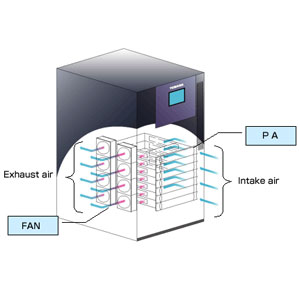
Resources
- Home
- About Air Cooling Systems
- Air Conditioner Pre Cooling System
- Air Cooling System
- Air Cooling System Design
- Air Cooling System In Automobiles
- Air Cooling System Reviews
- Air Cooling Systems FAQs
- Air Cooling Systems For Homes
- Air Cooling Systems For Offices
- Air In Cooling System Symptoms
- Car air Cooling System
- Car Air Cooling System
- Compressed Air Cooling System
- Cooling Air System
- Engine Air Cooling System
- Forced Air Cooling System
- Forced Air Heating And Cooling System
- Gas Turbine Inlet Air Cooling System
- How Do Air Cooling Systems Work
- Simple Air Cooling System
- Types Of Air Cooling Systems
- Underground Air Cooling System
- Where To Buy An Air Cooling System
Air Cooling System Design
Air cooling system design has really changed and developed over the last few years as more energy efficient models and materials are created and adapted for thermal engineering. Each element of air cooling system design is responsible for controlling some mechanism or output of the unit, from cooling to air flow to distribution. Because of this it is vital that each component can work together. With as many designs as are being created, edited, and remodeled every year, it is important that you know about the various types of designs if you are planning on purchasing one or entering the HVAC field in the near future.
Choosing an air cooling system design should be done with the following in mind.
- What air cooling system design will best fit your needs.
- What do the different types of air cooling system designs do
- How can air cooling design systems be improved
What Air Cooling System Design Best Fits My Needs
Air cooling system design is always changing, and determining what fits your needs is the first step in choosing the right unit for you. The rate at which you need to cool and heat a room is the first factor you need to consider, because it will narrow down the number of units that you will be able to use.
You need to determine the size of the space that needs cooling and choose the type of unit that is best able to cool the area efficiently. The air cooling system design that will best fit your needs doesn’t always have to be the most high tech or complicated. Instead, look for the design features that will best serve your cooling purposes and do so with efficiency.
What Do the Different Air Cooling System Designs Do?
Depending on the type of system that you choose, each one will work in a different way to provide the same outcome. Air cooling system design will consist of different size engines, motors, and fans that adequately cool an area proportionate to the size of each piece. Basically, each air cooling system design works in the same way, generating power to move the fan which will push cool air through a building at a given rate.
The difference is in how fast, slow, and how much each air cooling system design will be pushing that air into the building. Some buildings require very controlled and specific amounts of air to be moved and this is where the different designs can make all the difference.
How To Improve Your Air Cooling System Design
Once you have decided on an air cooling system design, or bought a building with one already installed, the time or need to improve it may arise. If this happens, it is possible to improve and update the existing unit that you already have in place. The easiest way to do so is to replace the key components that push air through to the venting in the building. With the right pieces and adapters it is very easy to replace the main components of your air cooling system design.
